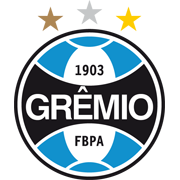Exploring the Purpose and Historical Significance of the Yellow Card in Football
In essence, a yellow card is given as a caution or warning. It provides players receiving them another chance to stay on the field for the remainder of the game.

Legendary footballer Pele named football the "beautiful game." However, this beauty can quickly be marred if actions such as time-wasting, cynical tackles, deliberate handballs, and dissent are not promptly and firmly addressed by match officials. To maintain the integrity and spirit of football, on-field referees have the authority to issue a yellow card as a caution to any player.
A yellow card in football can serve as a purpose similar to the licensing authorities in online casino games, which ensure fair play and maintain the integrity of the big bass splash games. The Yellow Card practice is done accordance with the laws of the game established by the IFAB or International Football Association Board.
What is a Yellow Card in Football?
A yellow card serves as an official caution, signalling that a player or a team official has committed a violation. The referee records the offender's details, the time of the offence, and the nature of the foul in a small notebook, commonly referred to as a booking.While accidents are inevitable in any sport, referees play a crucial role in ensuring that instances of misconduct do not cross the boundaries of fair play in football. Actions such as disrespecting opponents, aggressive play, dangerous behaviour, and inappropriate celebrations can all warrant a yellow card.
Xavi has collected more yellow cards (5) than Vinicius (focus on football and stop complaining) pic.twitter.com/4jHuYBM1aC
— 𝘾𝙝𝙖𝙫𝙖🍷 (@Chava_snr) January 24, 2024
Even after receiving a caution, a player or a team official can continue participating in the game. However, a subsequent yellow card results in a send-off, symbolized by a red card.
Circumstances When Yellow Card is issued to a player in Football
- Disrespecting Opponents: Any form of disrespect towards opponents.
- Interfering Offences: Any offence, not just fouls, that interferes with or stops a promising attack.
- Failure to Maintain Distance: Not respecting the four-metre distance during restarts.
- Goalkeeper Violations: Goalkeepers can be cautioned for 'illegally' touching the ball a second time after a restart, such as a goal kick or a free kick.
- Unauthorized Entry or Exit: Entering or re-entering and deliberately leaving the field of play without the referee's permission.
- Improper Celebrations: Actions like removing one's shirt, covering one's face with the shirt, or entering spectator areas will result in a caution.
Yellow Card for Team Officials
According to the IFAB rulebook, if an offence is committed and the offender cannot be identified, the senior team coach present in the technical area will receive the caution. Besides penalizing dissent, team officials can incur a yellow card for various offences, including but not limited to:- Failing to adhere to the limits of their team's technical area
- Intentionally stepping into the technical area of the rival team
- Expressing dissent by words or actions, for instance, hurling or kicking beverage bottles or other items
- Making gestures that distinctly show disrespect towards the match official(s), such as mocking applause
- Accessing the referee review area
- Repetitively or excessively demanding the issuance of a red or yellow card
- Behaving in a manner that is provocative or incites controversy
- Exhibiting disrespect towards the game
History of Yellow Cards
While players and team officials faced cautions and send-offs even in 19th-century football, FIFA only adopted the colour-coded red and yellow penalty card system during the Football World Cup in 1970. British referee Ken Aston conceived the idea of introducing a visual representation into the game. He recognized the need for better communication during matches involving players and teams from diverse linguistic backgrounds.Ken Aston chaired FIFA's Referees' Committee during the 1966 World Cup, where the linguistic barrier became evident again. He realized that cards resembling traffic lights, red and yellow, could overcome the language barrier and clearly communicate to players and team officials when they have been cautioned or sent off.
Aston presented his innovative idea to FIFA, which decided to experiment with yellow and red cards at the World Cup in Mexico in 1970. The concept proved successful and was gradually adopted worldwide.
Related:
Casino & Sports Links on Feedinco
- ⚽️ Betway Prediction
- ⚽️ 1xBet Prediction
- Best Casino Bonus
- Online Casino Bonus
- Mobile Casino Bonus
- New Online UK Casinos
- Football Free Bets
All Sports Predictions
- ⭐ Super Tips
- 🔥 HOT Football Tips
- ⚽️ Sports FREE Bets
- ⚽️ Best Betting Sites
- ⚽️ Sure Tips for Today
- ⚽️ Football Tips
- ⚽️ Daily ACCA tips
- ⚽️ Tip of the Day
- ⚽️ Soccer Prediction
- ⚽️ Winning Predictions
- 🔥 Best Prediction Site
- 🔎 Accurate Soccer Predictions
- 💸 Jackpot Predictions
- ⚽️ TODAY BETTING TIPS ⚽️
- BTTS Today
- Over 2.5 Prediction
- Full time Prediction
- Double Chance Prediction
- ⚽️ TOMORROW BETTING TIPS ⚽️
- Both Teams to Score Tomorrow
- Over 2.5 Goals Tips
- HTFT prediction
- 12 Betting Tips
- 🎾 TENNIS TIPS 🎾
- 🎾 Tennis Betting
- 🎾 Tennis Tips 1x2
- 🎮 ESPORTS TIPS 🎮
- 🎮 eSport Betting
- 🎮 eSports Predictions
- 🎮 eSports Betting Tips
- 🎮 Counter Strike Predictions
- 🎮 Dota 2 Tips
- 🎮 Overwatch Tips
- 🎮 LoL Tips
- ⭐ Casinos ⭐
- New Online UK Casinos
- Casino Free Bets NO deposit
- New NO Deposit Slots + FREE spins
- NEW Casino NO Deposit Bonus Codes
- Best Slot Sites UK
- Free spins NO deposit Mobile casino
- FREE Roulette Spins NO deposit
- Best Online Casino NZ [free pokies]
- Best Online Casino Canada
- FREE Casino Slots South Africa [no deposit bonus]
- Online Casino Games India [Online Casino, Online Roulette]
- Best Casino Bonus
- Online Casino Bonus
- Mobile Casino Bonus














































